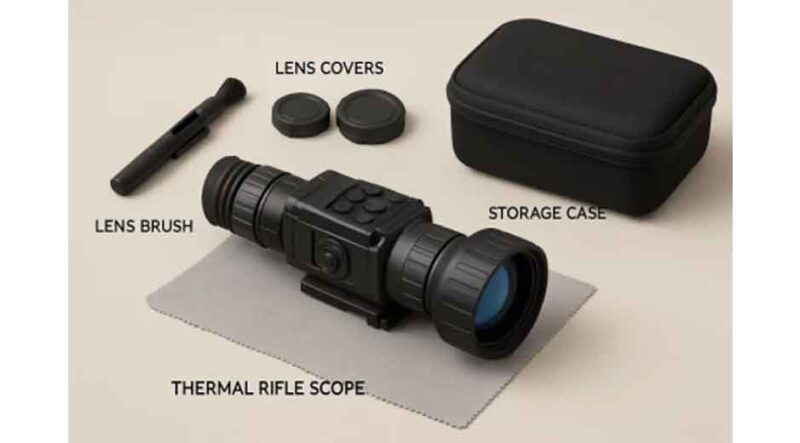Table of Contents:
- Understanding the Components of Your Thermal Rifle Scope
- Routine Cleaning Practices
- Proper Storage Techniques
- Battery Maintenance
- Regular Inspections and Maintenance
- Conclusion
The ability of thermal rifle scopes to detect heat signatures beyond human vision makes them essential tools for hunters and shooting enthusiasts. The high-tech features of these devices remain vulnerable to damage when users fail to maintain them properly. The infrared detection technology in thermal scopes makes them vulnerable to environmental factors and improper handling. The device requires proper maintenance to maintain its operational functionality and clear image quality and extended lifespan. Every hunting trip benefits from proper cleaning and safe storage and power source maintenance which guarantees reliable results. A dedicated maintenance schedule provides both peace of mind and confidence regarding your investment.
Understanding the Components of Your Thermal Rifle Scope
Thermal rifle scopes operate as precise instruments which deliver advanced performance capabilities. The essential components of these devices consist of thermal sensors and displays along with lenses and housings and batteries. The thermal sensor detects infrared radiation variations which it converts into visible images. OLED and AMOLED screens display thermal images in real time but any scratches or residue on these screens will reduce their ability to show fine details. The Germanium lenses require special care because they should never come into contact with hard surfaces or abrasive materials. The rugged shell defends internal electronics from bumps and shock and also protects against dust and moisture while the power source maintains proper operation. Knowledge of these vital components and their weaknesses enables users to identify potential issues before they develop into complete system failures.
Routine Cleaning Practices
Thermal scopes collect dirt together with oils and environmental particles during their operational period. The device requires regular cleaning to preserve its clarity and extend its lifespan. A soft brush or compressed air should be used to clean the lens and body of the device by removing dust and particles. A microfiber cloth should be dampened with lens-specific cleaning solution to clean the device while avoiding regular glass or household cleaners and using circular motions to prevent streaks. After cleaning, wipe the external housing down, avoiding moisture seeping into seams or internal electronics. Before touching the scope always wash your hands clean and then put back the protective covers to minimize airborne contaminants and accidental scratches.
Proper Storage Techniques
The long-term protection of your thermal rifle scope requires storage in a protective case which should be kept cool and dry while being shielded from sunlight and temperature fluctuations. The application of lens covers during non-use periods protects your optics from dust and particles. The storage case requires desiccant packs to absorb humidity because they protect internal components and lens surfaces from mold, mildew and corrosion. The scope requires both regular cleaning and a stable environment to achieve extended lifespan.
Battery Maintenance
Neglecting your battery can lead to failure, so it’s crucial to regularly care for it. Follow manufacturer’s instructions to recharge lithium-ion batteries, as their lifespan decreases when charged beyond recommended limits or stored for extended periods. Replace batteries when storage exceeds a week to prevent leakage, swelling, and terminal corrosion. Field personnel should bring extra fully charged batteries for emergency situations. Use only battery types and brands recommended by the manufacturer, as incompatible batteries can cause overheating, failure, and void the device warranty.
Regular Inspections and Maintenance
Regular thermal rifle scope inspections help identify wear and damage and malfunction before they cause financial losses and frustration. A standard inspection process requires checking for wear and damage while updating firmware and seeking evaluation from authorized technicians or manufacturer representatives. A journal that tracks cleaning activities and inspections and repairs helps users reference their maintenance history for support or service needs while showing usage patterns and professional intervention requirements.
Conclusion
Regular maintenance of thermal rifle scopes leads to exceptional clarity and reliability throughout multiple seasons. Your investment and field results receive protection through learning about components and following cleaning routines and safe storage methods and battery management and scheduled inspections. The disciplined maintenance approach ensures your optic delivers precise trustworthy performance in any situation and at any time which makes every trip as productive and enjoyable as the first.








